Qianzhou Ancient City (乾州古城) is located on the banks of the Wanyong River in Jishou City, Hunan Province, covering an area of approximately 0.47 square kilometers. Its name comes from the “Qian” hexagram in the Book of Changes (I Ching), due to its geographic features – two rivers, the Wanyong River and Tianxing River, flowing around the city, creating a landscape that resembles the hexagram.
The city was originally built during the Ming Dynasty in the Wanli period. Its city walls were constructed along the northern bank of the Wanyong River and the southern bank of the Xiaoxi River, with three sides surrounded by water and one side adjacent to a mountain, giving it a grand and imposing presence. Qianzhou Ancient City was expanded during the 8th year of the Zhengde reign in the Ming Dynasty (1513) and the 2nd year of the Jiaqing reign in the Qing Dynasty (1797), leaving behind many historical buildings such as Sanmenkai Gate, the former residences of Luo Rongguang and Yang Yuebin, Renhe House, and Qianzhou Confucian Temple.
With over 4,200 years of history, Qianzhou Ancient City has a rich and deep historical heritage. During the Xia and Shang periods, indigenous ancestors lived and thrived here, followed by other ethnic groups such as the Ji people, Yao people, and eventually the Miao people. During the Qin and Han dynasties, Qianzhou became an important commercial port and a hub for travelers, where various trade routes and postal roads converged, leading to its development as a thriving economic center. In the Ming and Qing dynasties, Qianzhou grew to become the political, economic, military, and cultural center of the Miao frontier region.
Table of Contents
- Basic Information
- Location and Transportation
- Highlights of Qianzhou Ancient Town
- Vlog about Qianzhou Ancient Town
Basic Information
| Estimated Length of Tour | 2 hours |
| Ticket Price | 108 RMB |
| Opening Hours | 8.00 – 22.30 |
| Telephone Number | 0086-0743-8517993 |
Location and Transportation
Qianzhou Ancient City is located on the banks of the Wanrong River in Jishou City, within the Xiangxi Tujia and Miao Autonomous Prefecture, Hunan Province. To reach the ancient city, you can take the No. 18 Urban-Rural Tourist Bus Line from Jishou Railway Station, or the No. 1 bus, which takes approximately 30 minutes to arrive at the Qianzhou Ancient City scenic area. From Jishou East High-Speed Railway Station, you can take a taxi directly to the scenic area, or alternatively, take the No. 22 bus to reach Qianzhou Ancient City.
Highlights of Qianzhou Ancient Town
Hujia Pond
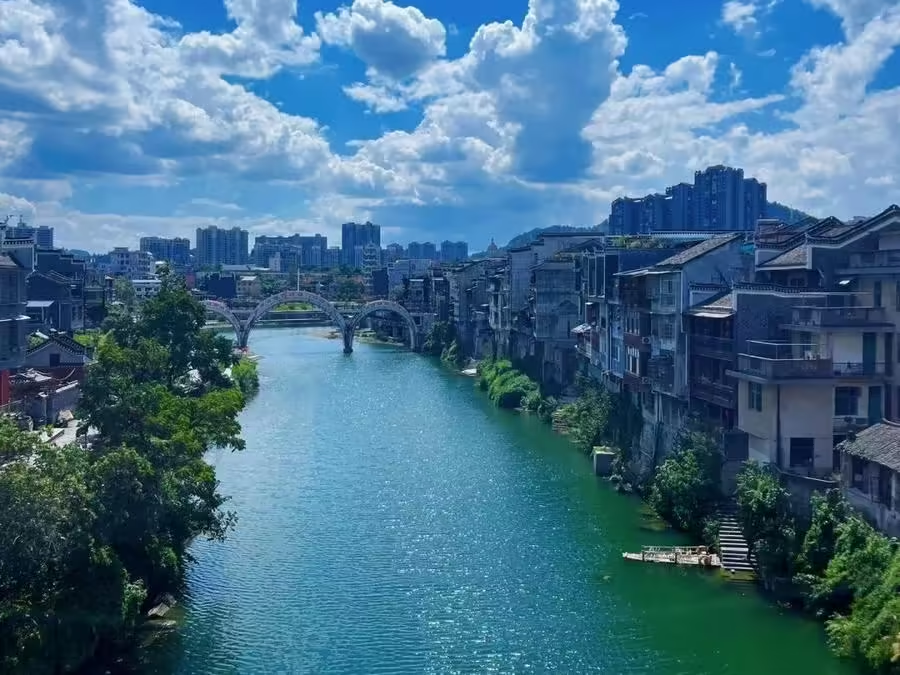
Hujia Pond, which dates back to the Tang and Song dynasties, is a historic site in Qianzhou Ancient City. It consists of a large pond and a small pond, covering an area of 2,800 square meters. Within the small pond lies a mysterious ancient well called Anlan Well. The depth of the well is unknown, and legend says it is connected to the Wanyong River, serving as the water source for the pond. This well not only provided water for the local residents but also played a crucial role in defending Qianzhou. In 1925, during the Republic of China era, General Xiong Kewu of the Sichuan army led 100,000 troops to besiege Qianzhou Ancient City, which was defended by fewer than 500 soldiers and residents. The defenders used bricks and logs to repel the attackers, causing numerous casualties among the Sichuan forces. When the Sichuan army attempted to tunnel under the city walls and use coffins filled with explosives, they still couldn’t breach the city and were ultimately defeated. Throughout the month-long siege, the defenders relied on the water from Anlan Well for survival. To commemorate this battle, the famous Qianzhou artist Yang Weishu inscribed a poem on the well’s edge. Between the two ponds lies Qingfeng Bridge, a curved stone arch. On the right side of the bridge stands a local earth god temple, where the Tujia people – prevalent in the region – worship their deity.
Sanmenkai (Three Gates Open)
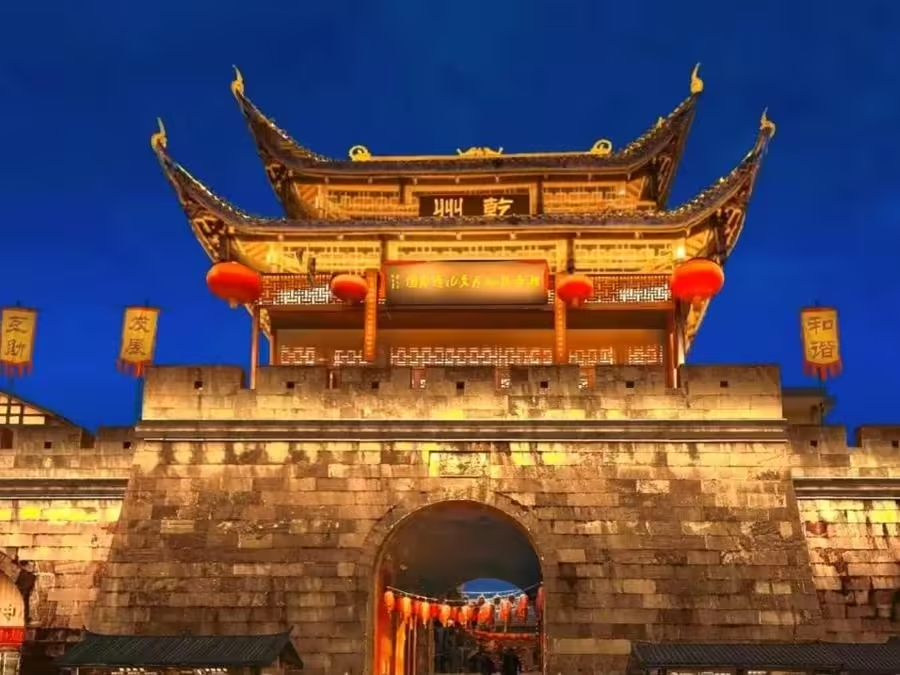
Sanmenkai, or “Three Gates Open,” is a remarkable architectural feature of Qianzhou Ancient City. Unlike most “moon cities” in China, which typically have two city towers and two gates aligned opposite each other, Qianzhou’s moon city boasts three city towers and three gates arranged in a unique pattern. The main tower stands in the center, with two smaller side towers, forming a character shape resembling “品” in Chinese. The design of the main and side towers differs in height and spacing, creating a balanced and harmonious structure. This distinctive layout, known as “Three Gates Open,” has been renowned for centuries. It serves not only as a functional space for daily life, commerce, and military defense but also as a masterpiece of traditional Chinese architecture. The thoughtful placement, grand appearance, high-quality materials, excellent craftsmanship, and sturdy construction make Sanmenkai a treasured example of ancient city design in China.
Qianzhou Confucian Temple
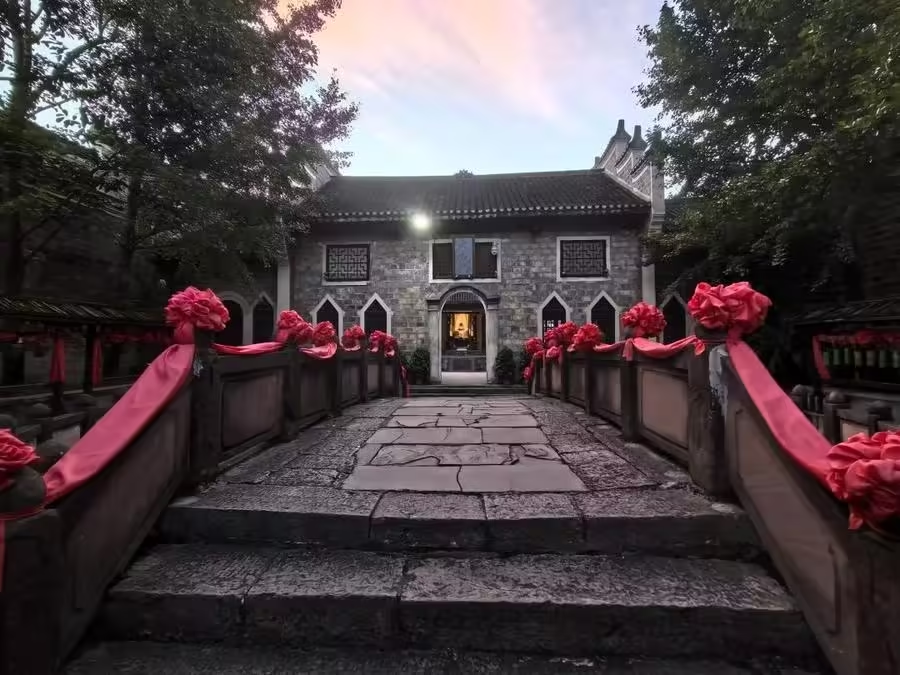
The Qianzhou Confucian Temple, built during the seventh year of Emperor Yongzheng’s reign in the Qing Dynasty, is a historic complex covering approximately 4,887 square meters. The temple features several key structures, including Minglun Hall, Wenchang Palace, Dacheng Hall, Dacheng Gate, Zhuangyuan Bridge, Lingxing Gate, and Chongsheng Shrine. At the entrance of the temple, there is an 18-meter-long screen wall, with a diamond-shaped floral window made of tiles in the center. The temple was constructed following the traditional layout of “left temple, right school,” meaning that students entered from the left and those paying respects to Confucius entered from the right.
Upon entering the temple, visitors are greeted by a four-pillar stone arch made of red sandstone, topped with lotus bud carvings. Inscribed on the horizontal plaque are the characters “Lingxing Gate,” symbolizing the recruitment of scholars and virtuous individuals. Beyond the stone gate is a semicircular pond known as the Moon Pond, with a depth of around 12 feet. A stone arch bridge called the Moon Palace Bridge, also referred to as the Zhuangyuan (Top Scholar) Bridge, crosses the pond. Scholars who achieved academic success would traditionally walk across the bridge and pay homage to Confucius to express their gratitude and wish for a bright future. It was also a common belief that students crossing the bridge before an exam would achieve great success. Two towering osmanthus trees flank the bridge, symbolizing the hope of achieving high academic honors, akin to “reaching the moon and plucking osmanthus blossoms.”
Southern Great Wall
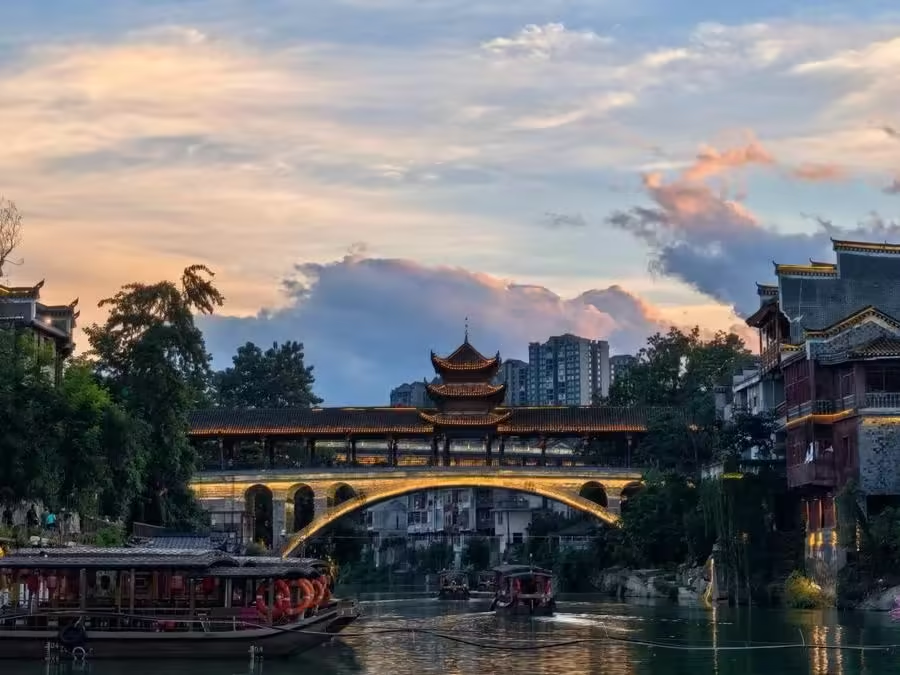
The Qianzhou City Wall, also known as the “Southern Great Wall,” dates back to the 8th year of Emperor Zhengde’s reign in the Ming Dynasty (1514), when a small stone city was initially built. In the 43rd year of Emperor Wanli’s reign (1616), construction on the extended defensive wall began. In 1714, during the 53rd year of Emperor Kangxi’s reign, the small stone city was renovated, and in 1796, the Qing government allocated funds to expand the stone wall further. After Qianzhou was elevated to a directly governed administrative unit in 1797, its jurisdiction covered over 1,000 square kilometers, with the city wall stretching over 300 miles, winding along rivers and mountains. It featured 188 watchtowers and fortifications, earning the name “Southern Great Wall” due to its impressive scale and significance.

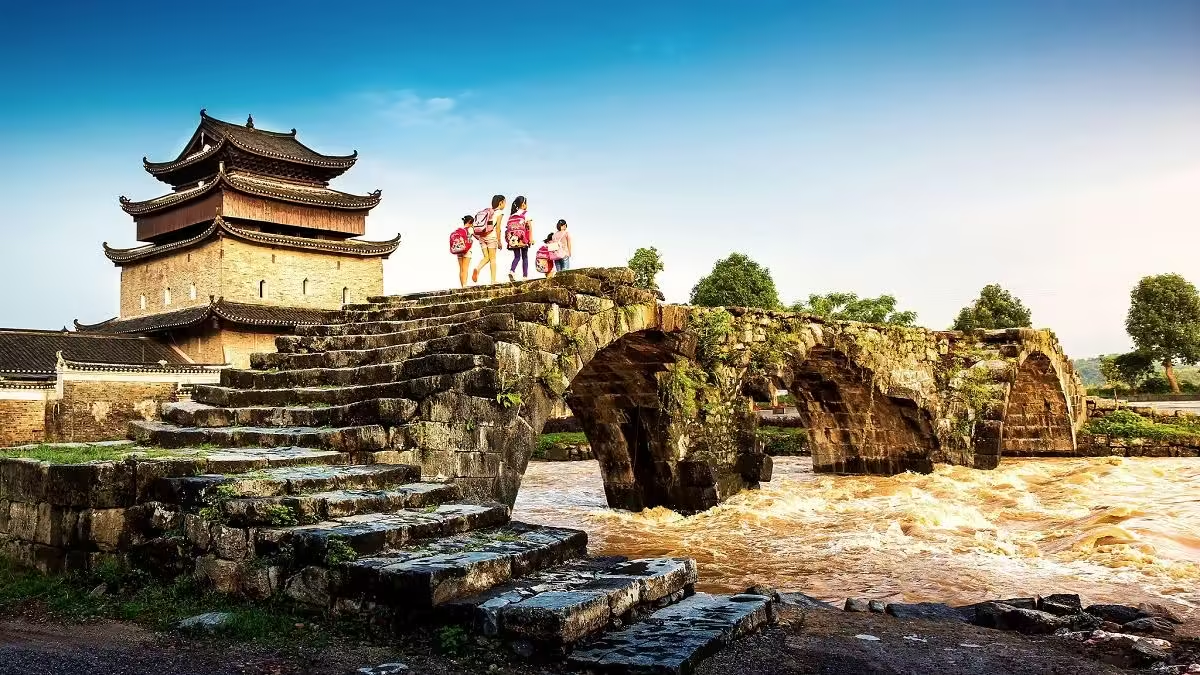

By chance, I ended up in this ancient city, and I surprisingly really like it. First, the streets feel incredibly clean. There are no electric scooters anywhere, and the roads are spacious. Also, while walking along the sidewalk, there’s no smell of dog urine; instead, the air is filled with a light scent of fresh grass and wildflowers. We stayed at the Manzhou International Hotel (漫州国际酒店), which costs about 150 yuan for the night. The hotel surprisingly has full smart… Read more »
Qianzhou Ancient Town is a bit boring. The overall area is quite large, but there aren’t many places to explore. The buildings are all quite new, making it feel more like a small park for locals to stroll in. However, the Miao tea is delicious.
Qianzhou Ancient Town is located in the bustling area of Jishou City in Xiangxi Prefecture. There’s no entrance fee.
Half of the scenic area is residential, filled with a vibrant local life.
Unlike the noisy and crowded tourist hotspots, it offers a tranquil and peaceful atmosphere.
If you find Fenghuang Ancient Town too commercialized, then Qianzhou Ancient Town is the perfect alternative for you!
My trip to Xiangxi was the least planned one, but it turned out to be the smoothest. Everything fell perfectly into place. For instance, I hadn’t planned where to stay; I booked a last-minute accommodation in Jishou, right next to the ancient city. As a result, I was treated to the beautiful night view of Qianzhou Ancient City. Since I hadn’t found a place to eat, I was forced to take my time appreciating the ancient city under the night… Read more »